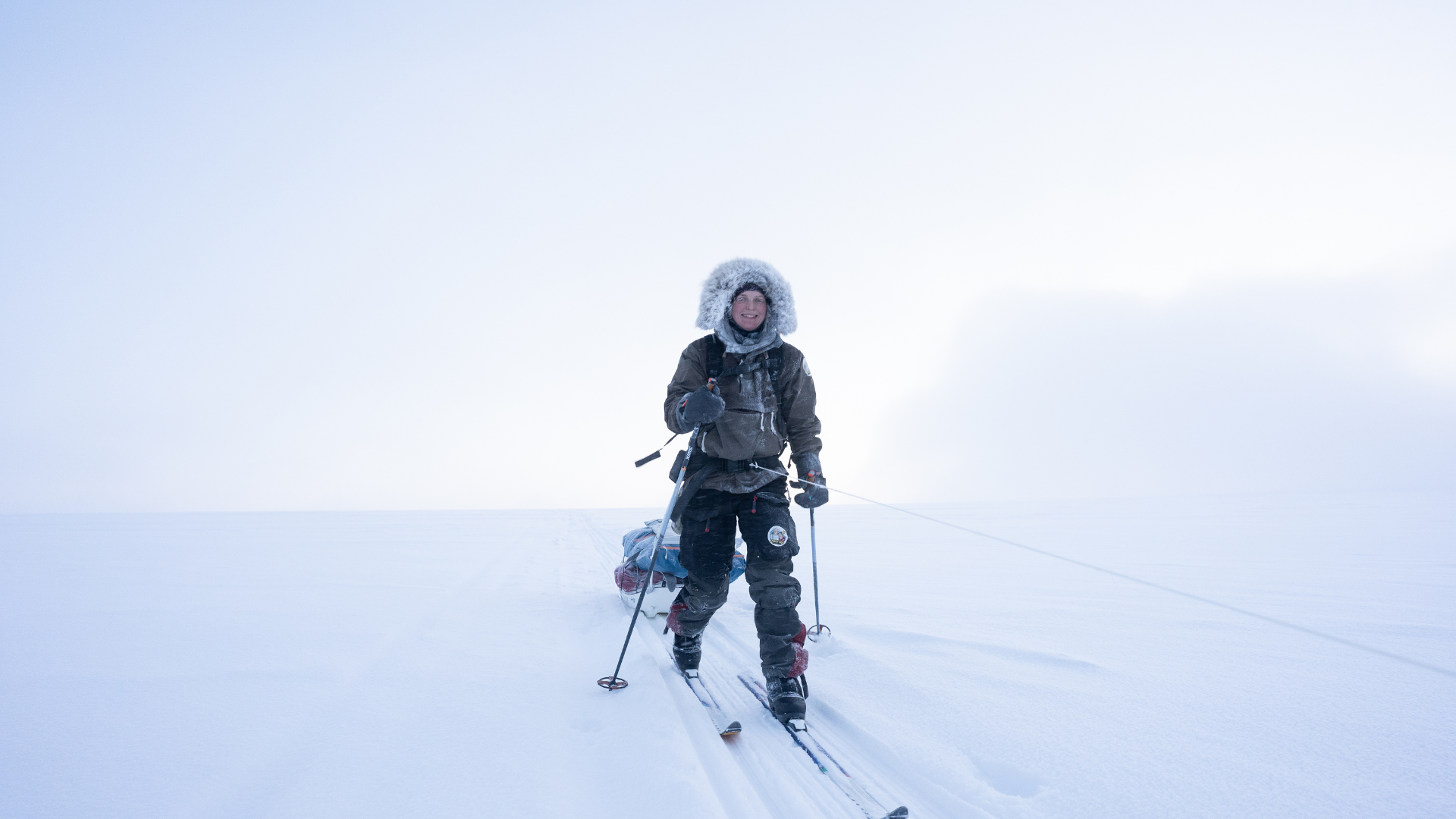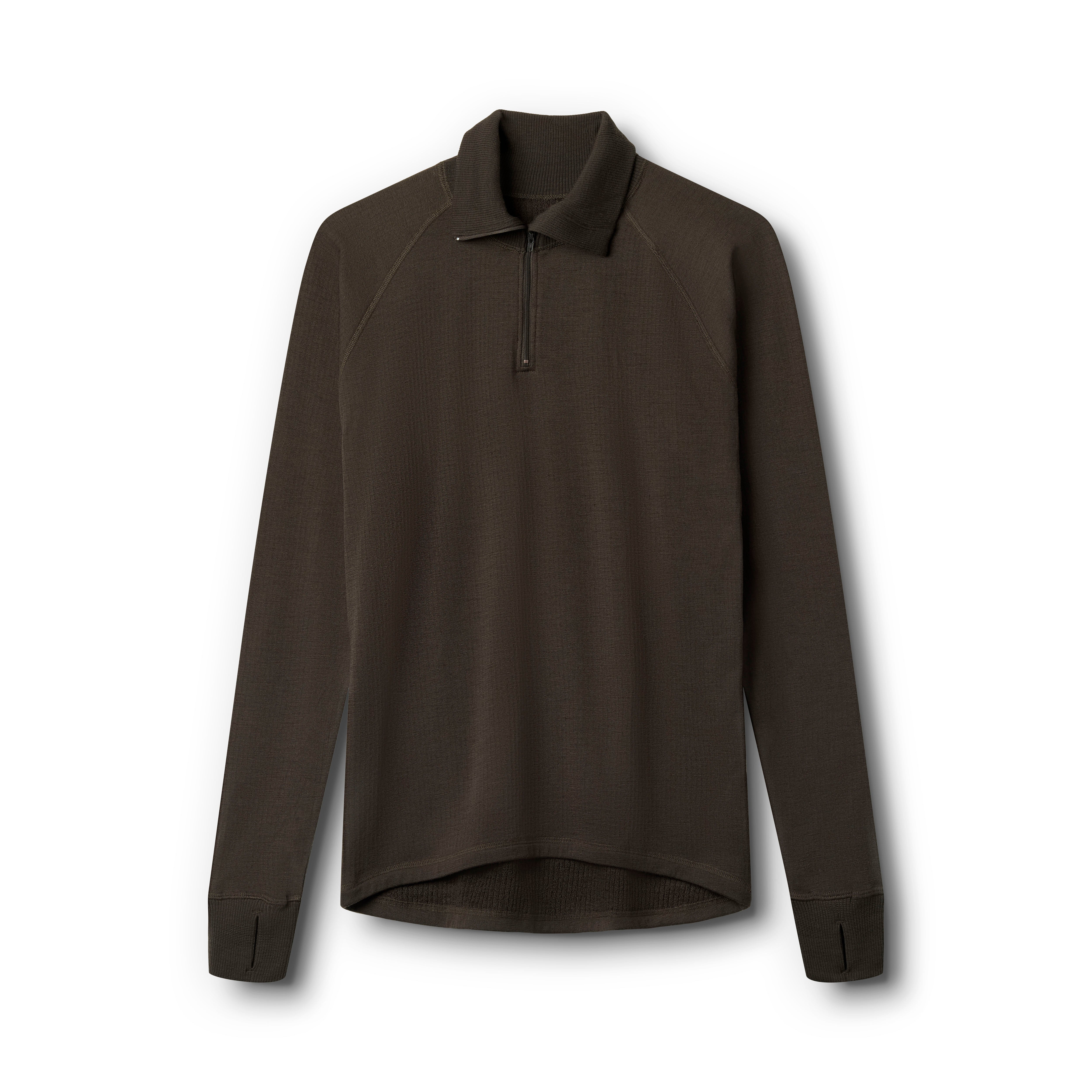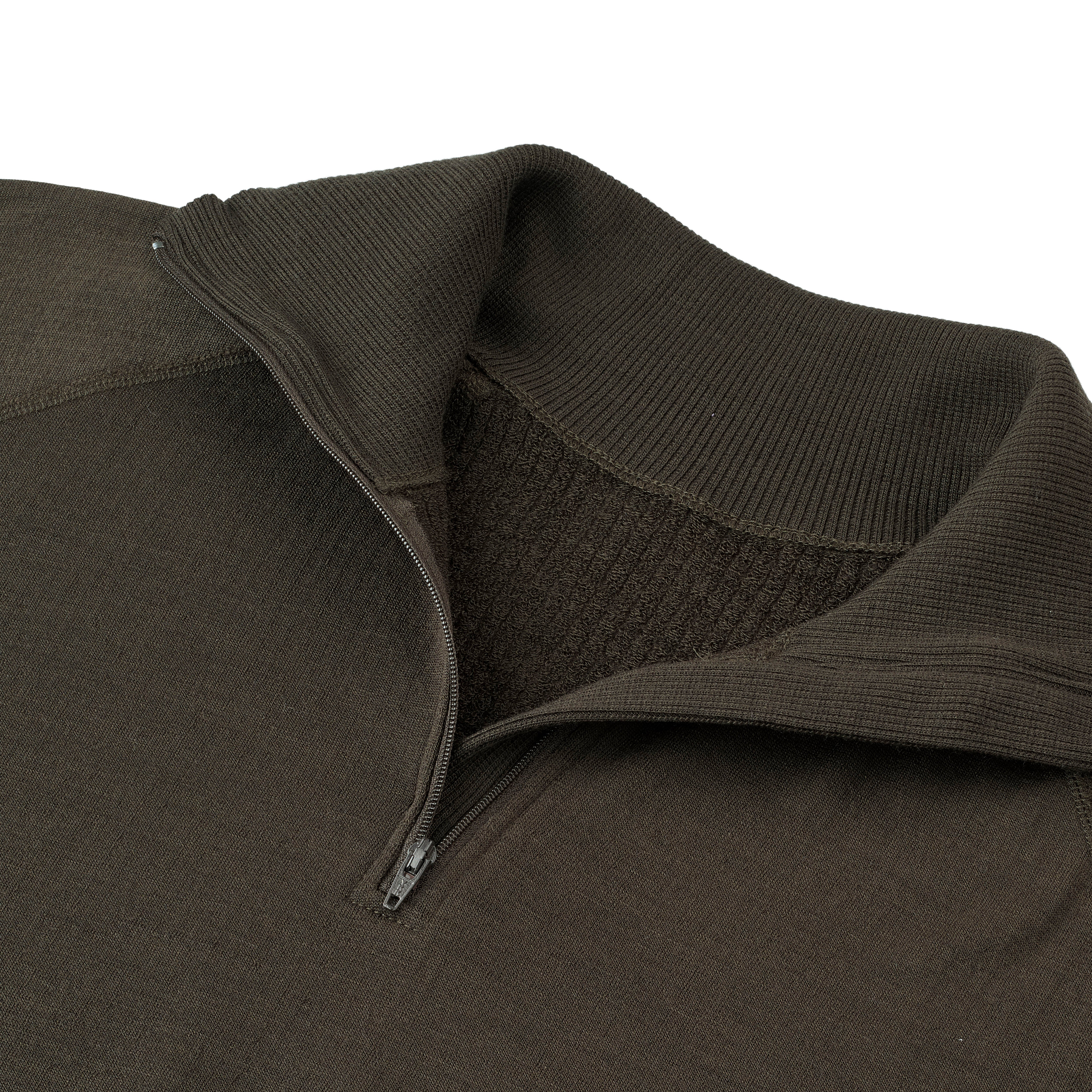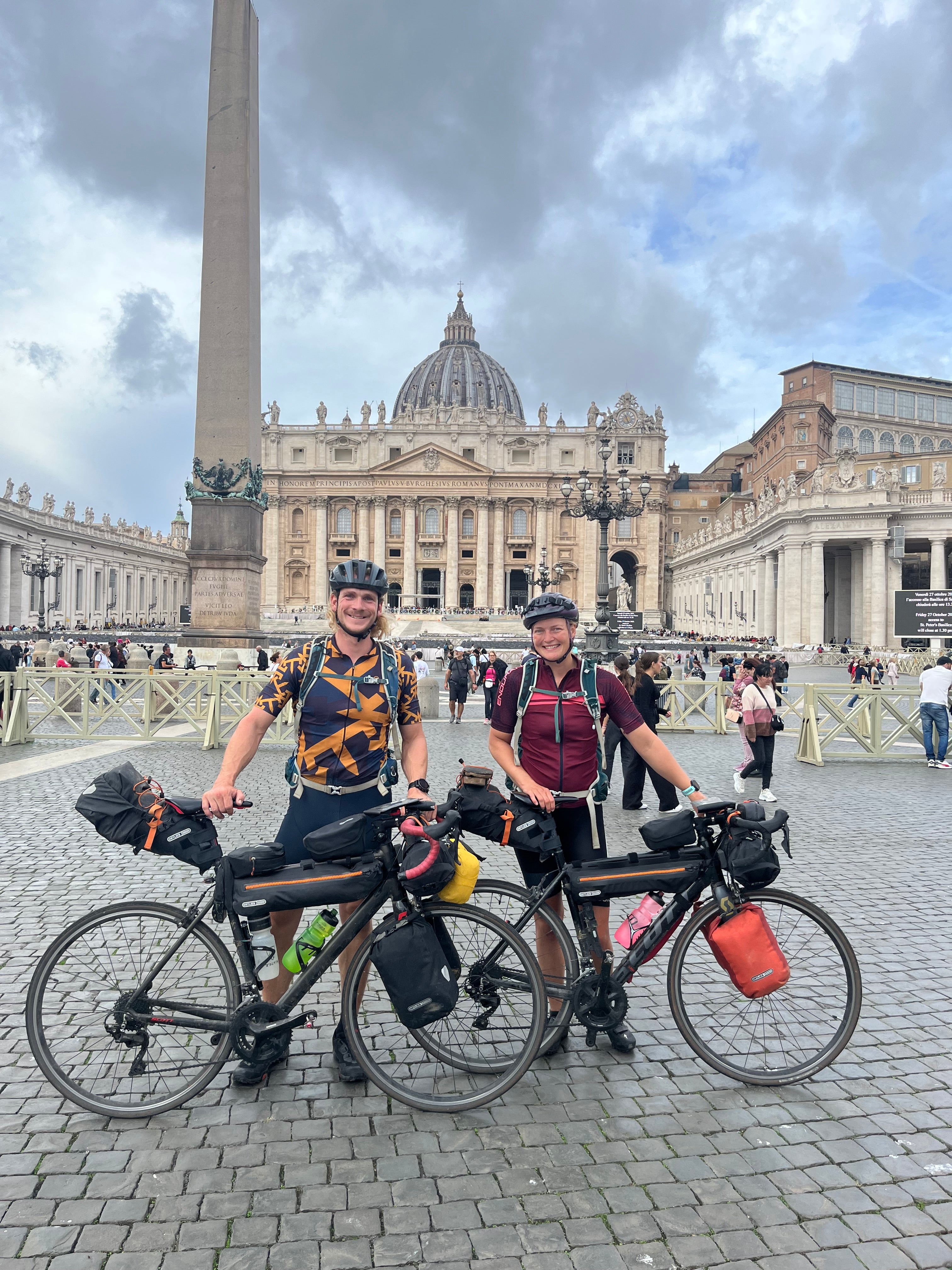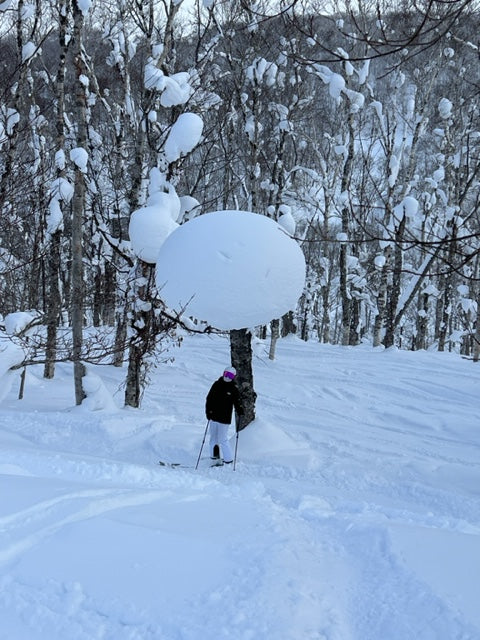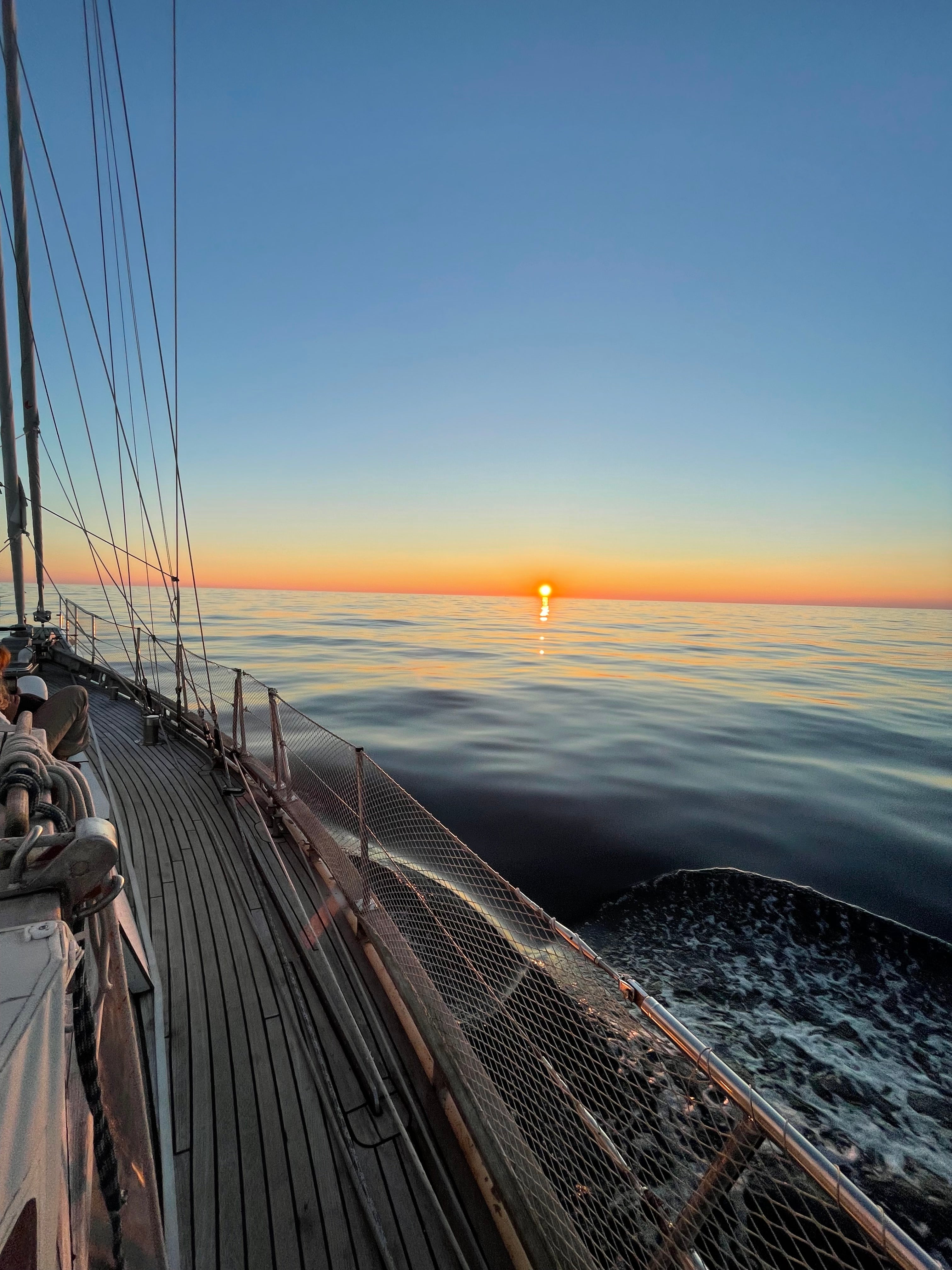On February 5, 2024, we embarked on our greatest adventure of the year: exploring Svalbard's largest island on skis, carrying all our necessary clothing, provisions, fuel, and equipment in sleds called pulks. Along the way, we had three depots to resupply our pulks with food and fuel. We had planned a route from home, carefully examining which glaciers we could safely travel on. The route included several loops that we could always cut short if we got delayed. This turned out to be a good idea, as Arctic weather is unpredictable and unforgiving.

With a temperature of -5°C, drifting snow, a strong wind in our faces, and twilight ahead, we clicked our boots into our skis, hooked the pulks to the harness, fastened our sled dog Bilbo in front, and turned on our headlamps; it was time to venture into the unknown. It was the end of the polar night, and although the sun remained below the horizon all day, there was a faint twilight at midday that grew longer and more colorful each day, bringing with it hues of red, orange, and purple.

Our journey took us northward and up onto the vast glacier systems, where mountain peaks protrude through the ice, the white landscape undulating like the fields back home in Denmark, and the crevasses in a glacier front are visible toward the sea ice. Here, it was utterly desolate, and at this time of year, we were the only living beings for miles around, making us feel very small and insignificant in this vast, white world of snow and ice. It is a harsh environment to traverse; up here, dense fog often challenged our navigation, while powerful weather systems forced us to stay put, listening to the wind howling against the tent fabric. The dark mornings, where the wind howled, and the snow lashed against the tent, made it difficult to get out of our sleeping bags and decide to move on, but the thought of the adventures waiting outside the tent overcame the desire to stay in the warm down.

On the way to Spitsbergen's highest peak, Newtontoppen, the sun emerged from its winter slumber, bathing the white landscape in its warm rays before quickly dipping below the horizon again. After that, the days lengthened by 20 minutes daily, and by the time we reached our first depot in Pyramiden in early March, there were already 8 hours of daylight. By this time, we had been on the move for over a month, and much had changed as the sun had appeared; the landscape looked different in sunlight, camp routines were easier when you could see, and it became easier to get up in the morning when you sensed the light outside.

The sun also brought warmth. The feeling of the warm rays on our faces and bodies is hard to describe. But suddenly, our energy levels were higher, our smiles broader, and our spirits lifted. Although temperatures were below minus 35, the sun was so strong that our thermometer showed plus 20, and we could walk and pull the pulks wearing only woolen undershirts. The cold temperatures usually bring clear weather, so when we reached the small Arctic research town of Ny Ålesund around Easter, it was under a cloudless sky, with a view of the cracked glacier fronts flowing into the fjord and a horizon stretching into eternity.

This year, the sea ice around Svalbard was thick and solid. After Ny Ålesund, we took advantage of walking on the water at sea level, where wildlife thrived after a long, cold winter. Around us, seals basked in the sun, ptarmigans perched on the few snow-free banks, and reindeer scraped with their antlers in the snow to reach the frozen tundra below. On our way southeast, we now also enjoyed walking with the sun on our faces, and our pale winter skin quickly took on a summer glow. We picked up our final depot near Sveagruva in mid-April, and from there, our course was due south toward Hornbreen, which shrinks yearly, struggling to keep southern Spitsbergen connected to the rest of the island. However, we did not manage to see how small the glacier had become; the thaw came quickly after we left Svea, so we turned back and set course for home.

After 90 days in the Arctic wilderness, with only each other and Bilbo for company, we finished our journey at the same spot where we started. This time, it was in full sun, no wind, and above-freezing temperatures. What a trip! And what a transformation we witnessed: seeing how a harsh, cold, and dark Arctic winter transforms into a warm and bright spring teeming with life, with the sun up 24/7, is truly magical. The changing weather, the many temperature fluctuations, and the snow with its many different facets challenged us and our motivation to the limit. But the joy we feel after completing the journey proves it was worth the effort.

With the great fluctuations in wind and weather, this trip required the right clothing. We had no heating in the tent, so it was important not to sweat on the route, as we could not dry damp clothes again. The layer-on-layer principle, with the right combination of wool and outerwear, was our go-to when working in front of the pulks, while in camp, we preferred comfortable and thicker woolen underwear to stay warm while staying still. The right clothing increased comfort on the trip and ensured we returned home safely.

We have now completed our third adventure out of four this year. We sit in our cozy little home in Longyearbyen with a cup of coffee and a cheese sandwich, reflecting on an adventure that took over a year to prepare and plan. We feel proud and happy, yet also a sense of "was that it?" It is hard to understand that it is now over - you can prepare for many things, but the hardest part is preparing for the end and when it's all over. Luckily, we have had a fantastic experience with countless memories and joys to take home. Experiencing the Arctic as we did is something special, and Svalbard will always be a place we return to in the future.

